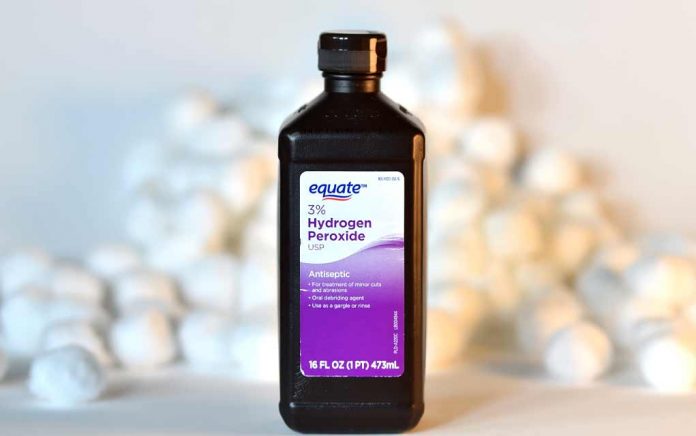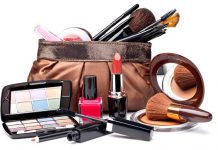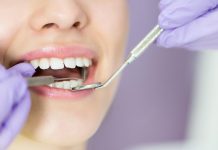
What Cleans Your Mouth, House, AND Toilet Bowl?
(AscendHealthy.com) – Imagine a product that could banish kitchen bacteria, clean the toilet, and even remove that nasty odor from Fluffy the Feline’s litter box. And just to make it more tempting, what if that product is so inexpensive that you can find it in most dollar stores?
Behold. We’ve got all the details on this seemingly magical product below.
What is Hydrogen Peroxide?
Typically encased in a brown bottle, hydrogen peroxide is classified as a household chemical. This liquid has the same components as water with one key exception.
Hydrogen peroxide contains one more oxygen molecule than water. Because of that difference, peroxide acts as an oxidizer.
Known for its multiple uses, hydrogen peroxide offers a powerful way to clean without the risks of chlorine chemicals. However, that same power comes with certain precautions described below.
Using Hydrogen Peroxide to Clean
Heigh-ho, heigh-ho, it’s off to clean we go…with just one bottle of hydrogen peroxide! Whether we need to tackle that disgusting toilet bowl or eliminate that sticky spot on the kitchen floor, peroxide can do the job.
Here are some of the ways we may use peroxide to super-clean our homes:
- Dishwasher: Pour hydrogen peroxide into a spray bottle, then spritz this cleanser in recessed areas of your dishwasher, such as traps and rubber seals.
- Food Prep Areas: Use hydrogen peroxide to sanitize food preparation areas like counters and cutting boards.
- Toilet Bowl: Leave ½ cup of 3% hydrogen peroxide in the toilet bowl for 20 minutes to banish germs and remove stains.
- Mirrors: Fill a spray bottle with ½ water, ½ hydrogen peroxide, then spray on mirrors and other glass surfaces. Wipe with paper towels or lint-free cloths for shiny results.
- Carpet Stains: Combine two tablespoons of hydrogen peroxide with one tablespoon dish soap to use for carpets stained with coffee, wine, or even ink. Let the peroxide solution sit on the stained area for several seconds, then use your fingers to work into the carpet. Rinse with water and blot up any excess.
Using Hydrogen Peroxide for People and Pets
From a mouth rinse to sanitizing for a Main Coon cat, hydrogen peroxide deserves its reputation for versatility. However, use caution in measuring amounts for certain purposes, such as a mouth rinse.
Here are the ways we may use peroxide for people and pets:
- Mouth Rinse: Hydrogen peroxide may help with easing oral health problems like canker sores, gingivitis, and cold sores. Mix equal proportions of peroxide and water. Swish around for about a minute, then spit. Avoid swallowing. Use for a maximum of four times daily. Talk with your dentist or doctor if problems continue.
- Litter Box: By regularly cleaning the litter box, we may reduce that nose-wrinkling aroma from cat urine. Dump the litter box contents, then soak the box in hot water with a small amount of hydrogen peroxide added.
- Toothbrush Sanitizer: Typically placed in the bathroom after use, toothbrushes may acquire a variety of bacteria. Researchers discovered that rinsing toothbrushes with hydrogen peroxide lowered the bacteria by 85 percent.
- Makeup Brush Sterilizer: We may protect our health by regularly sanitizing eyelash brushes, eyelash curler pads, and other makeup application products. Add one teaspoon 3% t hydrogen peroxide to a bowl of water, then soak the devices for 10 minutes.
Hydrogen Peroxide Cautions
Like any chemical, we need to be cautious when using peroxide. Follow these guidelines to protect your health and your family:
- Keep the bottle away from children and pets.
- Choose hydrogen peroxide products labeled 3% for cleansers, household sterilizers, and mouth rinses.
- Do not consume peroxide or use it directly on the skin.
- Peroxide is no longer recommended to clean wounds. Health experts caution that this chemical may damage healthy tissue surrounding the wound. Instead, soap and water protects the skin while serving as a cleansing agent.
- Wear gloves when using peroxide to clean your home if you have sensitive skin. Side effects of getting hydrogen peroxide on the skin may include hives, blisters, and itching.
By following the precautions above, we may benefit from stashing a bottle of peroxide next to gotta-have-it items like dish soap. From the kitchen counter to the kitty litter box, hydrogen peroxide provides an inexpensive yet effective way to sanitize our homes. For more details on using peroxide for oral care, check with your dentist or another healthcare provider.
~Here’s to Your Healthy Ascension
Copyright 2024, AscendHealthy.com




















